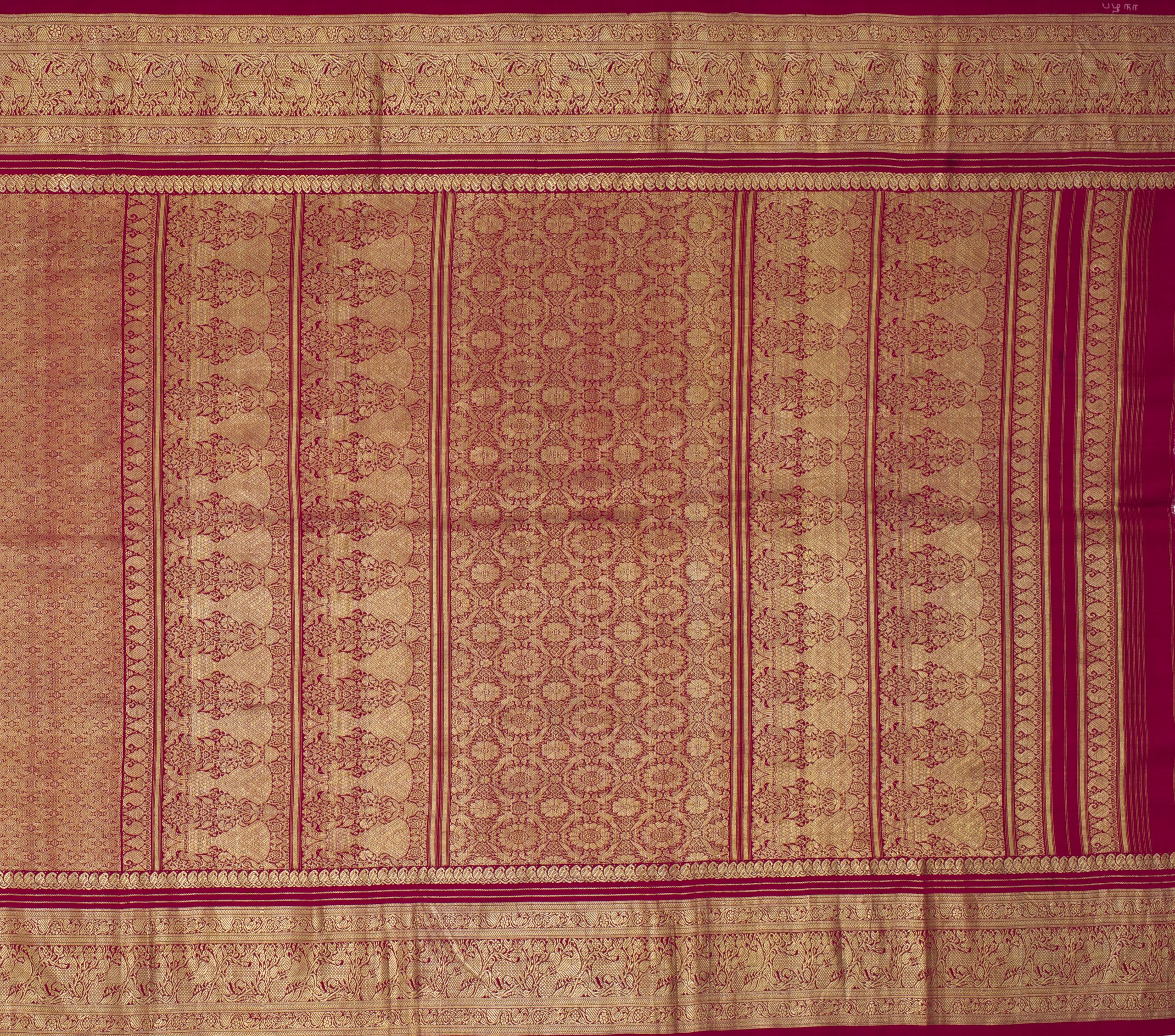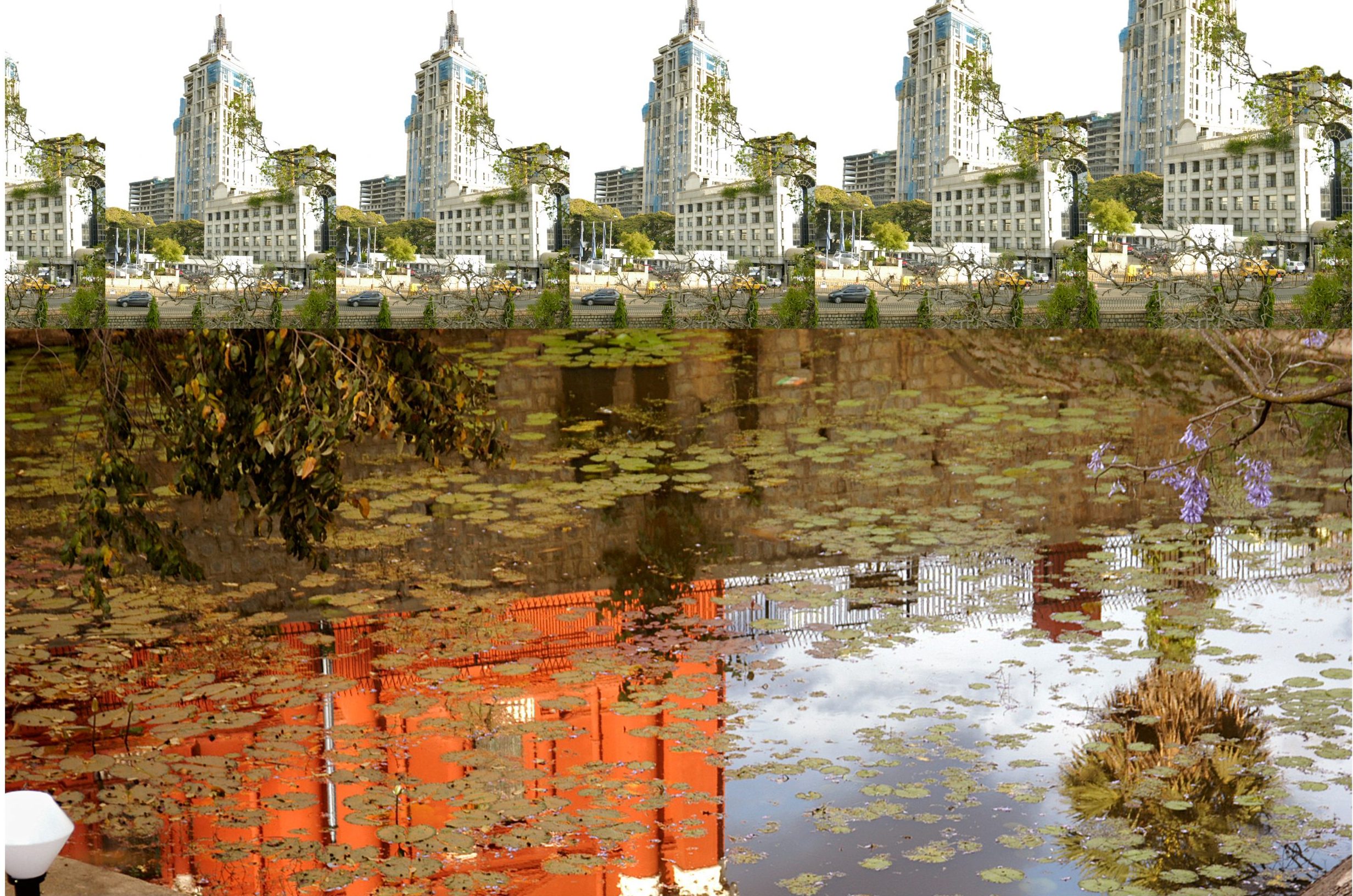Interviews
The Journeys of a Pattern Farmer
Rahul Mahesh
In conversation with contemporary artist, Alexander Gorlizki, for opening of his exhibition What The Camera Didn’t See by Alexander Gorlizki/Pink City Studio. The artist sits with Rahul Mahesh talking about his practice, latest exhibition at MAP and his longtime relationship with master miniature painter, Riyaz Uddin and Pink City Studio.
***
It was a busy day at MAP when I met with the contemporary artist Alexander Gorlizki who was in town, preparing for the opening of his exhibition, What the Camera Didn’t See by Alexander Gorlizki/Pink City Studio. He was particularly perturbed by the fact that his luggage had been misplaced at the Bengaluru airport. In his typical air of cheerful abandon, he sat for this interview in a patterned shirt which in many ways matched the many inspirations of his artworks.

I hope they find my luggage soon, I have a couple of sketch books that I have left in there, and yes, clothes”, shares Alex as he sits with me. I am caught up on this comment for the sole reason that it is often interesting to see the value artists have to their sketchbooks, making this their life source than anything else. Being an art student at Bristol University, he speaks fondly of the days where he spent as a student of sculptures. “I remember this one time, the class was asked to bring in their work and the topic was simply ‘naval’. In my haste and a fast approaching deadline I brought a rather large work of a bellybutton to the classroom. I was amazed to look around and find the other students had these amazing ships, carriers and whatnot on display. There was a mark of shock and later amusement looking at my rather imaginative and hairy interpretation of the word ‘naval’. I think that was my first brush with misunderstanding and mishearing and thereby making a career out of it”. Alex describes himself as a dreamer, fond of patterns and shapes and the details that make looking at art such a sublime experience.
“I was never really interested in going to museums, matter of fact, I hated it”, says the artist as he readies himself for the exhibition at the museum. Like many of his experiences and works there is a sense of irreverence and misnomer that characterises him as a person as well. “As a child, I was very much into making cartoons and comics and I think in many ways that has been an interest of mine ever since – the act of drawing.” When asked about the influence of doodling, he is quick to reprimand me, “I find the word doodling somewhat downplaying the skill. There is a moment when I am drawing where I find that my mind takes over my hand and the journey takes me to a place that I would not have been able to reach. There is more to drawing to call it ‘doodling’”. There is an intricacy in his concept and design that showcases how his interest has evolved and been inspired by many traditional techniques.

“My mother was a textile dealer and I used to accompany her on her travels to Central Asia, China, Tibet and many other places. I like to think of myself as a ‘pattern farmer’, there is so much in the details. The strap of someone’s watch, a cheap shirt from a local store and even crumpled papers. I am often accused of taking too long to reach a place because I happen to photograph even the silliest pattern that I find walking down a street”.
In the exhibition, What The Camera Didn’t See by Alexander Gorlizki/Pink City Studio, this interest in patterns and colours are shown in abundance. There are elements of the intricate makings of Mughal miniature painting traditions, inspirations from embroidery practices of Afghanistan and even iconographies from tile-making traditions. “I don’t exactly remember the exact paintings that drew me towards miniature paintings, it was maybe at the Victoria and Albert Museum or even before that. My mother’s friend, Francesca Galloway, is a prominent dealer and collector herself and she used to bring in these paintings and textiles from different parts of the world. I used to be amazed by the sharpness with which the details were explored. The paintings of the Bhagavad puranas, Mughal miniatures and Safavid miniatures particularly captivated me especially in the way space was organised. Despite being narrative driven there is something rather abstract about them”, says Gorlizki.

As many collaborations in art, the relationship between Alex and master miniature painter Riyaz Uddin began on one of Alex’s journeys to India. At the time, he was working alongside the tourism industry in Rajasthan as a miniaturist working on portraits and remaking miniatures and keeping this tradition alive in so many ways. “The relationship between Riyaz and I has been one of the most fulfilling experiences. It is the longest lasting relationship I have ever had. I must say what began as a transactional relationship has blossomed into a friendship where I am grateful to have known the man and see his work in such close quarters. To me, he is one of the most skilled miniaturists who has a keen eye for the technique”.

Riyaz Uddin leads Pink City Studio along with a few other artists, with each catering to a very particular skill set that brings life to the works that are on display at the museum. Alex is a designer at heart with a steady understanding of conceptualising his work and behind the facade of this patterned shirt and sunny disposition is a man who has a clear knowledge of what he wants his work to look like. Breathing life into his designs, Riyaz and Pink City Studio work meticulously to bring vigour to the static vintage photographs and inanimate imagery. The works travel back and forth from Jaipur to Alex’s studio in New York and back. Sometimes, this process takes years to complete and the understanding between Alex and Riyaz is almost second nature. Surprisingly, it is not the work but the friendship that Alex and Riyaz have that shone through this conversation. A relationship built on mutual trust, understanding and respect for each other’s craft.
“When Abhishek (MAP’s founder) asked me to take a look at his collection and that there was a possibility that I could exhibit my work here, I was excited for this opportunity. I was particularly interested in vintage photographs for the reason that they were so formal and often inaccessible to everyone. I have always toyed with the idea of playing with formal compositions and reimagining them in my own way”. The exhibition brings out the various motifs from moments in Alex’s life to patterns that have inspired this pattern farmer through the years. Slipping into his plentiful bag of patterns, these reimaginings replace the rigidity and the static nature of these photographs. What we see in the gallery are motifs and imagery that add movement and vigour into moments frozen in time. There are images of a sea diver at the bottom of a frame that have been painted into the digital file of the vintage photographs and some have motifs of a menagerie of animals. Some have been directly painted into the photograph thereby subverting the seriousness of the people in the frame. “I would like to say my work walks the line of surrealism. There is of course surrealist iconography in my work but at the same time I am inspired by minimalist artists like Agnes Martin. I think, in the process, I have been subverting and playing with these styles all my life”.

There is a dreamy playfulness that pervades through his works, the gallery is peppered with moments of irreverence, joy and absurdity. Alex is quick to mention that even play is serious work, sometimes more serious than work itself. “I look at paintings in a formal sense, I conceptualise my work in that similar seriousness. Yet there is a moment where we all, as artists, let go”. When asked about what the audience could expect, Alex says, “I don’t expect the audience to come to this show with any expectations. They are the meaning makers. What people see in art is often a combination of their experiences and if they visit my show multiple times and see different things each time, I know I have done something right”.
As the evening settles in and the lights of the museum go on, we are interrupted by a phone call from the airport authorities. We parked the conversation with a satisfied understanding that I got an hour from the artist and him with the relief that his bags had been delivered to his hotel room. Guess we both left the room happy that day.
***
Rahul Mahesh is a Content Writer at MAP. He finds pleasure in reading Russian Literature with metal and punk music playing in the background.






